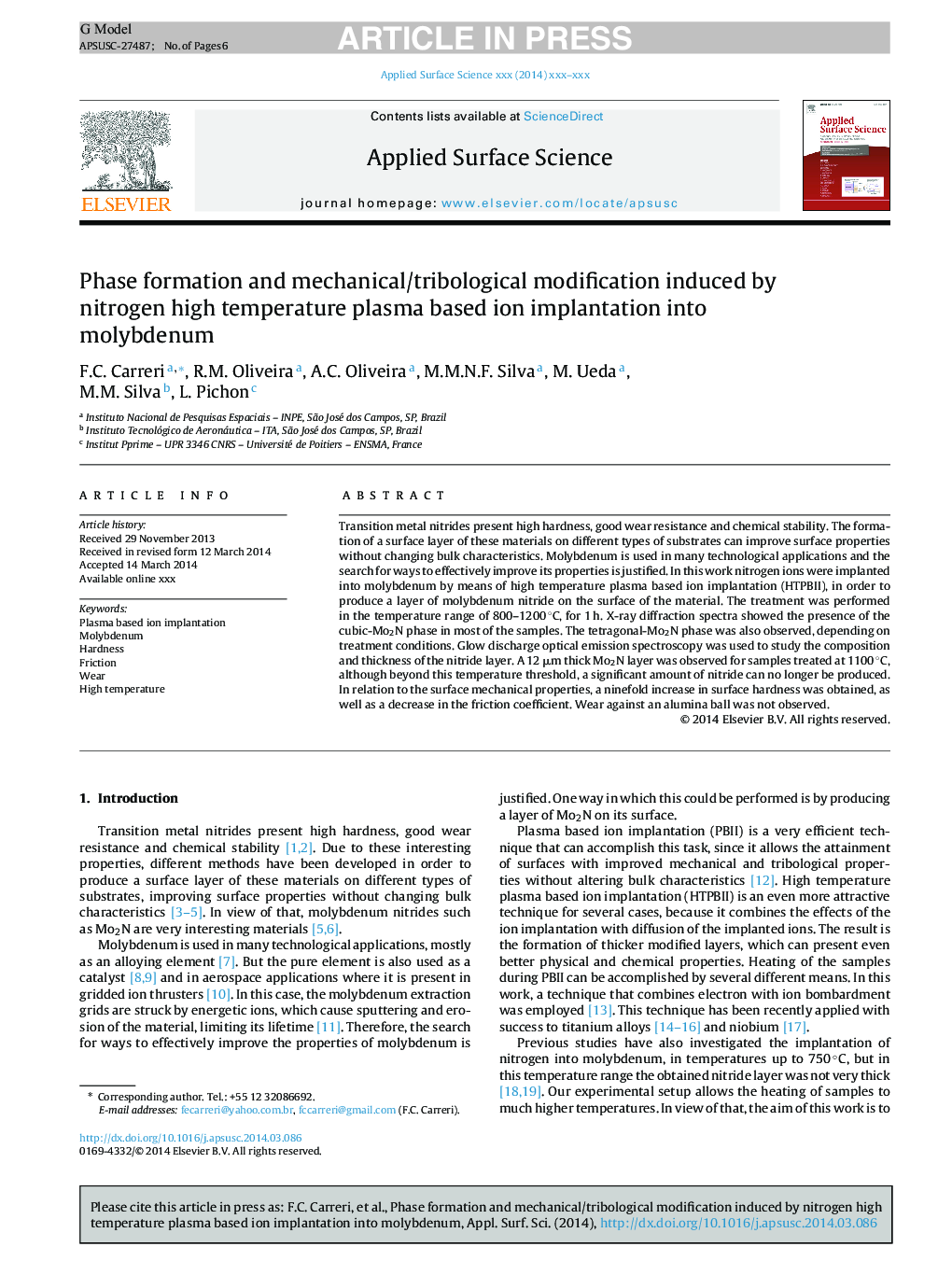| Article ID | Journal | Published Year | Pages | File Type |
|---|---|---|---|---|
| 5356685 | Applied Surface Science | 2014 | 6 Pages |
Abstract
Transition metal nitrides present high hardness, good wear resistance and chemical stability. The formation of a surface layer of these materials on different types of substrates can improve surface properties without changing bulk characteristics. Molybdenum is used in many technological applications and the search for ways to effectively improve its properties is justified. In this work nitrogen ions were implanted into molybdenum by means of high temperature plasma based ion implantation (HTPBII), in order to produce a layer of molybdenum nitride on the surface of the material. The treatment was performed in the temperature range of 800-1200 °C, for 1 h. X-ray diffraction spectra showed the presence of the cubic-Mo2N phase in most of the samples. The tetragonal-Mo2N phase was also observed, depending on treatment conditions. Glow discharge optical emission spectroscopy was used to study the composition and thickness of the nitride layer. A 12 μm thick Mo2N layer was observed for samples treated at 1100 °C, although beyond this temperature threshold, a significant amount of nitride can no longer be produced. In relation to the surface mechanical properties, a ninefold increase in surface hardness was obtained, as well as a decrease in the friction coefficient. Wear against an alumina ball was not observed.
Related Topics
Physical Sciences and Engineering
Chemistry
Physical and Theoretical Chemistry
Authors
F.C. Carreri, R.M. Oliveira, A.C. Oliveira, M.M.N.F. Silva, M. Ueda, M.M. Silva, L. Pichon,
